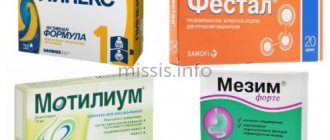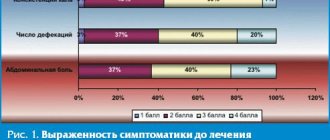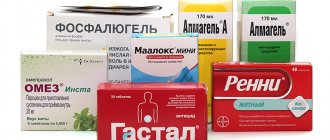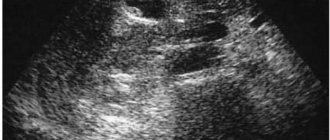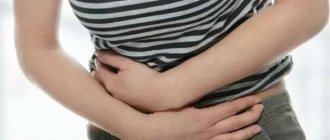Cholelitholytic drugs (cholelitholytics) are a group of drugs that can dissolve gallstones and are used to treat gallstone disease.
Factors that provoke the formation of gallstones include: overweight (obesity), low physical activity (physical inactivity), consumption of large quantities of fatty foods, red meat, prolonged fasting, inflammatory diseases of the liver, gallbladder and biliary tract, diabetes mellitus, hormonal contraceptives, female sex hormones, etc.
Indications for use
Cholelitholytic drugs are used in the treatment of conditions that are accompanied by the formation of gallstones: cholelithiasis and calculous cholecystitis.
In addition, cholelitholytic drugs are used for various dysfunctions of the hepatobiliary system: cholangitis (inflammation of the bile ducts), biliary cirrhosis of the liver, hepatitis, which is accompanied by stagnation of bile (cholestasis), biliary dyskinesia, atresia (congenital obstruction) of the biliary tract, reverse reflux of bile into the stomach and esophagus - biliary reflux gastritis and biliary reflux esophagitis.
Cholelitholytics are additionally prescribed in the complex therapy of alcoholic liver disease, as well as for the prevention of negative effects on the liver during treatment with antitumor, antiviral drugs, antibiotics, and hormonal drugs (including when using hormonal contraceptives).
Symptoms of the disease
Sand in the gallbladder, or foreign neoplasms in the form of stones, cause painful symptoms, which will not be difficult for an experienced gastroenterologist to identify. Found gallstones? Symptoms and treatment are as follows:
- attacks of boring pain in the right hypochondrium from the liver;
- constant nausea, which stops for a short period of time, and then appears with renewed vigor with periodic urge to vomit;
- a bitter taste in the mouth due to the accumulation of bile in the stomach, and then its involuntary release into the oral cavity during belching;
- stool disorders, expressed in the form of prolonged constipation or diarrhea;
- an increase in temperature if a stone in the bile ducts has blocked the stable movement of biological fluid and caused an inflammatory process;
- jaundice of the skin, spreading from the surface of the abdomen throughout the body;
- discoloration of stool until it becomes white;
- physical weakness and general malaise;
- flatulence and increased gas formation in the intestines.
Even a small stone in the gallbladder can cause these symptoms. In case of systemic inaction, extraneous formation can provoke much more serious complications that threaten the preservation of the integrity of the digestive organ. If sand is found in the gallbladder, treatment is organized in the same way as when removing a stone formation. Only the duration of the therapeutic course is reduced.
pharmachologic effect
Cholelitholytic drugs stabilize the liquid state of bile, prevent the precipitation of cholesterol crystals dissolved in bile and the formation of gallstones. In addition, cholelitholytics are able to dissolve already formed gallstones.
Also, cholelitholytic drugs have a hepatoprotective effect - they protect liver cells (hepatocytes) from the negative influence of unfavorable factors of the external and internal environment, and have a membrane-stabilizing effect.
Basics of gallstone disease treatment
Treatment of gallstone disease should be comprehensive. Particular attention is paid to a diet rich in plant fiber (vegetables, fruits) with the exclusion of high-calorie, fatty foods from the diet. It is important to eat regularly - by the hour, at the same time. In addition, regular moderate physical activity (walking, aerobics, swimming) is strongly recommended for a patient with gallstone disease.
Cholelitholytic drugs are usually used prophylactically or in the case of asymptomatic cholelithiasis (without biliary colic, jaundice) with so-called “floating” (not fused to the wall of the gallbladder or bile ducts) stones of small caliber - 5-10 mm in diameter, which do not fill the gallbladder by more than half.
Cholelitholytic drugs effectively dissolve only relatively “fresh” gallstones - which are no more than 2-3 years old.
Ursodeoxycholic acid is usually prescribed once at night, less often - 2 times a day, at lunchtime and at night. The course of treatment is long, ranging from 6 months to 2 years. A pronounced pharmacological effect of ursodeoxycholic acid preparations is observed after one and a half to two years of regular use.
After a course of treatment with cholelitholytic drugs, the patient must undergo an ultrasound scan of the gallbladder and biliary tract at least once every six months in case of new stones. If stones are detected during examination, the course of treatment with cholelitholytics is repeated.
Biological supplement Ziflan
Bile acids are formed in liver cells, the precursor of which is cholesterol. When the ratio of bile acids is disturbed, they can crystallize and form stones. The reason for this may be metabolic disorders, chronic or acute diseases of internal organs, a sedentary lifestyle, or pregnancy.
The drug Ziflan
The drug Ziflan as a herbal dietary supplement contains immortelle extract. This main active ingredient stimulates the production of bile with a normal ratio of bile acids. Such bile does not precipitate and does not form stones. Ziflan stimulates the formation of bile acids from cholesterol from its own reserves. When such reserves run out, cholesterol deposited on the walls of blood vessels and the gallbladder comes into play, promoting the breakdown of stones.
Ziflan is prescribed in courses of 30 days with a break of 10-15 days. Depending on the degree of development of gallstone disease, doctors may recommend 2-3 courses of the drug per year. Sometimes treatment continues for up to two years if, according to ultrasound results, positive dynamics and dissolution of stones are observed. Ziflan is usually recommended to be taken with food, one capsule 3 times a day. Even after discontinuation of the drug, the liver is still able to work in the correct mode for a long period of time, producing the correct bile. Doctors often recommend preventive courses once a year if there is a history of gallstone disease.
Contraindications
Contraindications for taking Ziflan include pregnancy, lactation, individual intolerance to immortelle extract, and children under 12 years of age. Do not take the drug if you have jaundice or high blood pressure. Side effects may include allergies. Ziflan as a herbal preparation should not be taken for more than three months in a row, as it tends to accumulate in the body and inhibit liver function.
Features of the treatment of cholelithiasis
In the case of complete blockage of the bile duct with a stone, stones welded to the walls of the bladder or ducts, a gall bladder more than half clogged with stones, or the development of jaundice, a patient with cholelithiasis is prescribed surgical treatment to remove the gall bladder filled with stones - cholecystectomy.
A common complication of cholelithiasis is biliary colic. It occurs when small stones move from the gallbladder into the bile ducts. Biliary colic is accompanied by acute abdominal pain, usually after eating fatty foods.
In case of development of biliary colic, it is recommended to take painkillers (analgesics): paracetamol, diclofenac, ketoprofen, and in case of particularly severe pain, the narcotic analgesic buprenorphine. In addition, the patient is prescribed antispasmodics (papaverine, drotaverine, hyoscine) to relax the bile ducts and facilitate the passage of small stones into the intestinal lumen.
Rescue of the gallbladder “with stones”
Often, patients who are diagnosed with gallstones for the first time are sure that they are “awaited” by a surgeon’s knife and removal of the gallbladder. But modern medical science believes that clear indications are needed for surgery. In the case where the carriage of stones is “asymptomatic”, surgery is not indicated and can be postponed, possibly until the end of life. At the same time, in 7-15% of patients, with proper medical supervision, medications are able to “dissolve” bile sediment and reduce the size of stones, which, in principle, will avoid surgical treatment and other complications of cholelithiasis.
The program “Saving the gallbladder with stones” was developed for the treatment of cholelithiasis without surgery by one of the leading gastroenterologists in Russia and St. Petersburg, Doctor of Medical Sciences, Professor S.N. Mehdiev.
The program is based on the recommendations of the European and Russian Societies for the Study of the Liver and includes laboratory tests, instrumental studies and treatment under the supervision of a gastroenterologist.
Note!!! Attempts to blindly “dissolve” gallstones on your own, using folk remedies or medications, and studying information from the Internet, are fraught with serious problems and complications. Therefore, we strongly do not recommend using such methods. Treatment of cholelithiasis should be carried out only under the supervision of a doctor and with the drugs specified in the clinical recommendations.
Who is the program intended for?
The program will be relevant for people who have
- Ultrasound revealed “sand”, “echo-suspension”, “flakes”, “clot” or “concretions” (stones) in the gall bladder;
- there have never been attacks of biliary colic (attacks of “acute” pain in the right hypochondrium);
- there are no indications for gallbladder removal;
- There is a recommendation to see a gastroenterologist.
Program Goals
- conduct an in-depth examination of the gallbladder, biliary tract, liver, pancreas and stomach before treatment;
- carry out therapy to “dissolve sediment” and reduce the size of gallstones;
- develop preventive recommendations after therapy and assess the need for surgical intervention for the treatment of cholelithiasis in the future.
What is included in the program “Saving the gallbladder with stones”?
- Ultrasound of the abdominal cavity.
- Shear wave elastography of the liver.
- Video gastroscopy.
- Dynamic ultrasound of the gallbladder with a choleretic breakfast.
- Laboratory tests of blood, urine and feces at the beginning and end of treatment:
- for a comprehensive assessment of the condition of the gallbladder, liver and pancreas;
- to assess the composition of intestinal microflora;
- to control and summarize the results of the treatment.
- Consultations with a gastroenterologist during the program to select and conduct therapy.
Cost and duration of the program
- The cost of the program at a special price is 23,800 rubles (according to the price list 29,820 rubles).
- The duration of the program is 6 weeks.
- Number of visits – 4.
How is diagnosis and treatment carried out according to the program?
The program is carried out in stages over 6 weeks using medications that can “dissolve” bile sediment and reduce the size of stones, which in most cases will avoid surgical treatment and other complications of gallstone disease.
During the program, the attending gastroenterologist will conduct an examination, select and administer medication for gallstone disease, and explain the need and timing of preventive observation and treatment.
First visit
Includes laboratory diagnostics (a set of 12 laboratory blood tests and a urine test), abdominal ultrasound and shear wave elastography of the liver for
- determining the viability of the gallbladder;
- diagnosis of concomitant diseases that contribute to stone formation;
- comprehensive assessment of the condition of the gallbladder, liver and pancreas and patency of the bile ducts;
- checking the health of the liver and assessing the degree of fibrosis (stiffness of its tissues).
Second visit (1 week from the start of the program)
Includes digital video gastroscopy with assessment of the gastric mucosa in i-Scan mode and an appointment with a gastroenterologist for
- examinations of the upper gastrointestinal tract;
- summing up the results of the survey;
- determination of indications and contraindications for treatment;
- selection of primary treatment and antibacterial therapy to reduce inflammatory changes in the gallbladder.
A treatment plan will be drawn up for you that will correct metabolic disorders of the gallbladder and improve the fluidity of bile, which will help “dissolve” sand (sludge), as well as reduce the size of stones in the gallbladder.
Third visit (5 weeks from the start of the program)
Includes laboratory diagnostics (a set of 12 blood tests and a stool test for dysbacteriosis) to summarize the results of therapy and assess its side effects.
Fourth visit (6 weeks from the start of the program)
Includes an appointment with a gastroenterologist and a control dynamic ultrasound examination of the gallbladder with a choleretic breakfast to monitor the reduction of sediment and the dynamics of changes in the size of stones and contractility of the gallbladder and sum up the results of treatment.
You will learn about the effectiveness of the treatment, its effect on the condition of the body and the dynamics of the disappearance of sediment and the reduction of gallstones. In addition, you will receive information about the degree of restoration of motor activity of the gallbladder.
You will receive detailed information about your health status and the results of the treatment, as well as the need for further maintenance therapy and observation to prevent recurrence of stone formation.
Benefits of the program “Saving the gallbladder with stones”
- examination and treatment are carried out in comfortable conditions and at a special price;
- The program was developed by the chief physician of the center, Doctor of Medical Sciences, Professor S.N. Mehdiev. taking into account the latest recommendations of the European and Russian Societies for the Study of the Liver;
- treatment is selected by a gastroenterologist individually for each patient and adjusted during therapy;
- the treating gastroenterologist accompanies you at all stages of the program, it is he who, together with you, will help save your gallbladder;
- Modern expert-class equipment ensures the reliability of the results.
What will you get as a result?
- Improving the functioning of the gallbladder and reducing the risks of surgery.
- Reducing the size of stones and gallbladder sediment;
- Improving well-being and quality of life;
- Recommendations for preventing recurrence of stone formation.
Diagnostic equipment "GC Expert"
Video gastroscopy is carried out using a high-precision PENTAX video endoscopic system, equipped with i-Scan digital image enhancement technology, which makes it possible to identify precancerous and other changes in the mucous membrane at an early stage to prevent the development and timely treatment of chronic and oncological diseases of the gastrointestinal tract.
Abdominal ultrasound and shear wave elastography are performed using an expert Philips Epiq 5 ultrasound machine with shear wave elastography function.
Examination and treatment according to the program are carried out by doctors from our center
Endoscopists
- Ukhova Maria Vladimirovna
- Vanyan Arsen Valerievich
- Polyglottov Oleg Vladimirovich
Gastroenterologist, ultrasound doctor
- Ibragimova Zeinab Magomedovna
